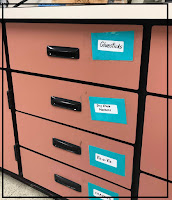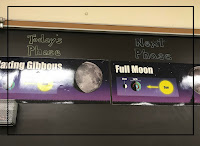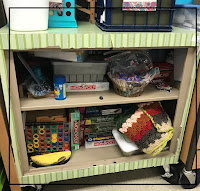It's always tough to know how to start the year with a new group of writers...and this year brings more challenges than most. I'm planning to dust off a tried-and-true instructional technique that yields big benefits to both reading and writing: sentence unscrambling.
Sentence unscrambling is just one of the four basic sentence composing techniques suggested by Don and Jenny Killgallon, authors of multiple texts and exercise books for teachers. When I use the technique in my classroom, I go a step further and use sentence composition activities to build reading comprehension skills as well as handwriting fluency.
The great part about sentence unscrambling is that it can be tucked into small bits of the day, and it reinforces everything you want students to be noticing and thinking about as they write. Here's how I built an activity for my students as part of our first unit, in which we explore texts related to oceans.
Find or write a suitable sentence
When selecting a sentence, think about constructs that students may find intriguing, but challenging. Sentences with capitalized words, interesting word choice, and multiple clauses make for good sentences at the sixth grade level.
Break up the sentence into meaningful chunks
These chunks will be what students unscramble. Keeping some words together helps students to see how sentences fit together and will help them in their next sentence composing activity, sentence imitating.
So how does this sentence split apart? Deep stays on its own, as an adverb showing location. Under the Pacific Ocean stays together, as a prepositional phrase. The main verb, lives, will be all on its own. Finally, the mysterious giant squid is a group of words that should remain together, as mysterious, giant, and the all modify the noun squid.
Scramble the sentence for students to analyze
I always keep the first letter of the sentence capitalized, because this is a great clue for students to use as they analyze what could be going on. Otherwise, I try to just do a random scramble.
Analyzing the sentence
When I introduce the sentence to students, I model how to read the different chunks and think about how the sentence could fit together. My sentence uses some inverted word order, so it adds a bit of a challenge. I encourage students to use a numbering scheme to keep track of their thinking instead of rushing to recopy the sentence. "Hm, which sentence chunk could be first? Ah, here is the one with the capital letter. Which could be next?"
Recopying the sentence
This becomes a handwriting activity when students have to recopy the sentence correctly. Believe me, there will be some big surprises as you see how kids struggle with this! I always use lines that have a midline so that students can space uppercase and lowercase letters appropriately, and so that I can see who has a good handle on capitalization and who does not.
Differentiating
Sentence unscrambling has so many differentiation possibilities! Of course you can have variations in the kinds of sentences that you offer. For example, in the above sentence, you could have some with the inverted subject-verb and some without, just to prompt a discussion about what's going on and why. You could also have some students create the sentences and do the chunking.
For students with OT concerns, I provide them with larger lines for recopying the sentences. Some students may also need to have the sentences cut up for them so that they can put them together.
Daily Sentence Writing
If you would like a set of created activities, try Daily Sentence Writing!
















